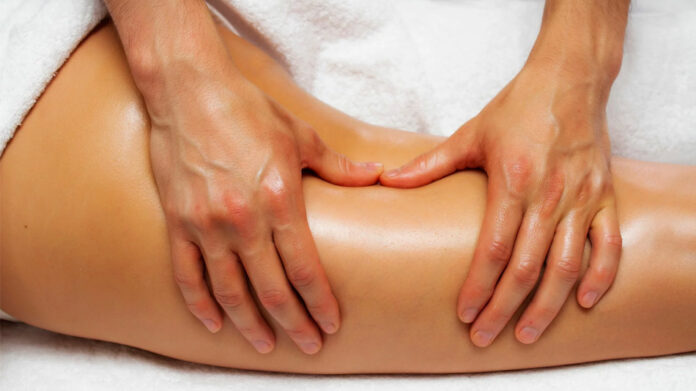Table of Contents
Cellulite. It’s a word that can strike fear into the hearts of many. Whether you’ve just noticed those dimples on your thighs or you’ve been battling cellulite for years, you’re not alone. In fact, cellulite affects nearly 90% of women at some point in their lives. With that being said, let’s delve deeper into the world of cellulite treatment.
Understanding Cellulite: What Is It?
Cellulite is the bumpy, lumpy appearance of skin caused by the way fat cells and connective tissues interact beneath the surface. It typically appears on the thighs, buttocks, and sometimes the abdomen. Contrary to popular belief, cellulite is not solely related to body weight; even slender individuals can have it.
The root cause of cellulite is a bit complex. It involves a combination of factors. Here’s a simplified breakdown:
1. Fat Deposits
Fat cells beneath the skin’s surface can push against connective tissues, creating that uneven, dimpled look. Thicker fat layers can exacerbate the appearance of cellulite.
2. Connective Tissues
The bands of collagen fibers that connect your muscles to your skin can become inflexible and tighten, pulling the skin downward. This tension can make cellulite more noticeable.
3. Hormones
Hormonal changes, such as those that occur during puberty, pregnancy, and menopause, can influence cellulite development. Estrogen, insulin, and thyroid hormones all play roles.
4. Lifestyle Factors
Sedentary lifestyles, poor diet, smoking, and high-stress levels can contribute to cellulite. Staying hydrated and maintaining a healthy weight can help minimize its appearance.
The Truth About Cellulite Creams
Now that we understand what cellulite is, let’s talk about the most common solution people turn to: cellulite creams. You’ve probably seen countless advertisements promising miraculous results with a simple cream application.
What to Expect
If you decide to try a cellulite cream, keep your expectations realistic. While some users report smoother skin and reduced dimples, the effects are often temporary. Regular, long-term use may be required to maintain results, and individual responses vary.
The Power of a Healthy Lifestyle
While cellulite creams may provide some relief, the most effective way to manage cellulite is by adopting a healthy lifestyle. Here are some practical steps you can take:
1. Stay Hydrated
Drinking plenty of water helps keep your skin hydrated and supple, potentially reducing the appearance of cellulite.
2. Eat a Balanced Diet
A diet rich in fruits, vegetables, and whole grains provides essential nutrients that support skin health. Avoid excessive consumption of processed foods and sodium, which can lead to water retention.
3. Exercise Regularly
Regular physical activity can help you maintain a healthy weight and tone your muscles. Targeted exercises that focus on the thighs and buttocks can also help improve the appearance of cellulite.
4. Manage Stress
High-stress levels can lead to hormonal changes that may worsen cellulite. Incorporate stress-reduction techniques such as yoga, meditation, or deep breathing into your daily routine.
Professional Treatments: What Works?
If you’re looking for more significant and long-lasting results, there are several professional treatments available. These treatments often require multiple sessions and can be more expensive, but they can provide effective cellulite reduction.
1. Cellulite Laser Therapy
Laser therapy involves the use of lasers to break down fat cells and stimulate collagen production. It’s a minimally invasive procedure that can help improve the appearance of cellulite over time.
2. Radiofrequency (RF) Treatments
RF treatments use radiofrequency energy to heat the skin and underlying tissues. This heat can tighten the skin and reduce the appearance of cellulite. Like laser therapy, RF treatments may require multiple sessions.
3. Endermologie
Endermologie is a non-invasive treatment that uses a device equipped with rollers and suction to massage and manipulate the skin. This can temporarily reduce the appearance of cellulite and improve circulation.
4. Subcision
Subcision is a surgical procedure that involves the insertion of a needle under the skin to break up the fibrous bands responsible for pulling the skin down. This can result in smoother skin, but it’s a more invasive option.
Consider Your Options Carefully
Before undergoing any professional cellulite treatment, it’s essential to consult with a qualified healthcare provider. They can assess your individual needs and recommend the most appropriate approach.
Embrace Self-Love and Body Positivity
In our quest for smoother skin, it’s crucial to remember that no one has a perfect body. Cellulite is a common occurrence, and it doesn’t define your worth or beauty.
Tips for Building Self-Confidence
- Practice positive self-talk: Replace self-criticism with self-affirmation.
- Surround yourself with supportive people who uplift and encourage you.
- Focus on your strengths and accomplishments rather than perceived flaws.
Conclusion: Your Path to Smoother Skin
Navigating the landscape of cellulite treatment can be overwhelming, but armed with knowledge and realistic expectations, you can make informed choices. Remember that there’s no one-size-fits-all solution, and what works best for you may be different from someone else.
Whether you choose to try cellulite creams, adopt a healthier lifestyle, or explore professional treatments, the key is to feel confident and comfortable in your skin. Embrace self-love, prioritize your overall well-being, and know that you are beautiful just the way you are, cellulite and all.















